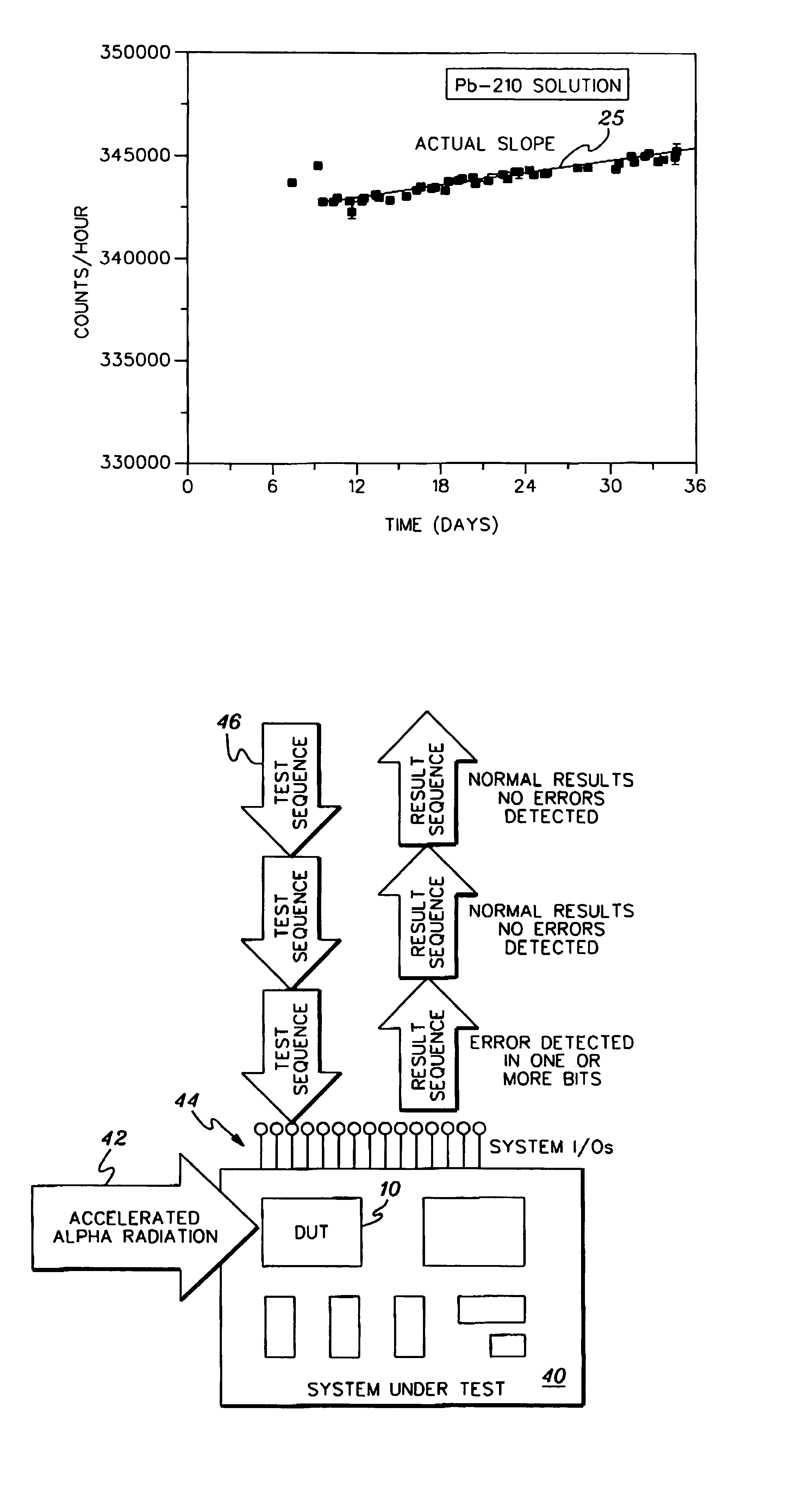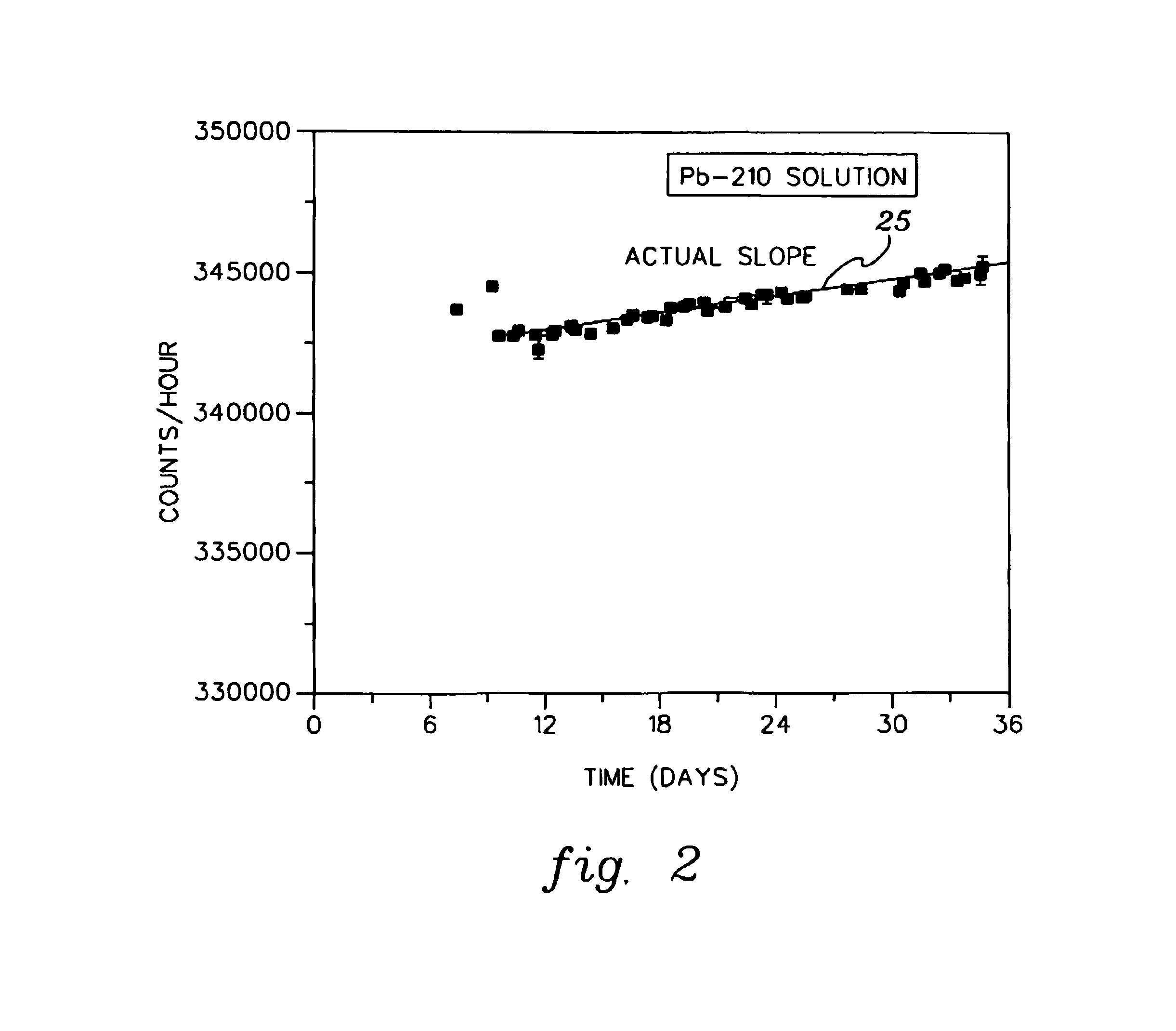System and method for accelerated detection of transient particle induced soft error rates in integrated circuits
a technology of integrated circuits and soft errors, applied in the field of packaging integrated circuits, can solve the problems of preventing the access of the substrate to the semiconductor device, preventing the detection of soft errors in electronic systems, and allowing access by hand-held radioactive sources
- Summary
- Abstract
- Description
- Claims
- Application Information
AI Technical Summary
Benefits of technology
Problems solved by technology
Method used
Image
Examples
example
[0024]HUF is applied to an IC. The fillet 19 (FIG. 1) is vacuumed out; and the chip edges are cleaned with acetone to remove any HUF not contained under the chip. The device is then soft-cured at 85° C. for 60 minutes. The surface radioactivity, i.e., the alpha particle emission rate in counts per hour, is then measured. CUF is applied to form a new fillet 20 around the chip, encapsulating any exposed HUF. Hard curing is performed at 150° C. for 120 minutes; and the alpha particle emission rate is measured.
[0025]The method of doping the underfill of an IC for accelerated SER detection in accordance with an aspect of the present invention may be extended to other radioactive isotopes, such as, for example, thorium or uranium, to mirror the flux and alpha-particle energy distribution from real packaging materials because there might be impurities in materials such as mined silica.
[0026]In another aspect of the present invention, the transient particle emission rate may be tunable by a...
PUM
 Login to View More
Login to View More Abstract
Description
Claims
Application Information
 Login to View More
Login to View More - R&D
- Intellectual Property
- Life Sciences
- Materials
- Tech Scout
- Unparalleled Data Quality
- Higher Quality Content
- 60% Fewer Hallucinations
Browse by: Latest US Patents, China's latest patents, Technical Efficacy Thesaurus, Application Domain, Technology Topic, Popular Technical Reports.
© 2025 PatSnap. All rights reserved.Legal|Privacy policy|Modern Slavery Act Transparency Statement|Sitemap|About US| Contact US: help@patsnap.com



